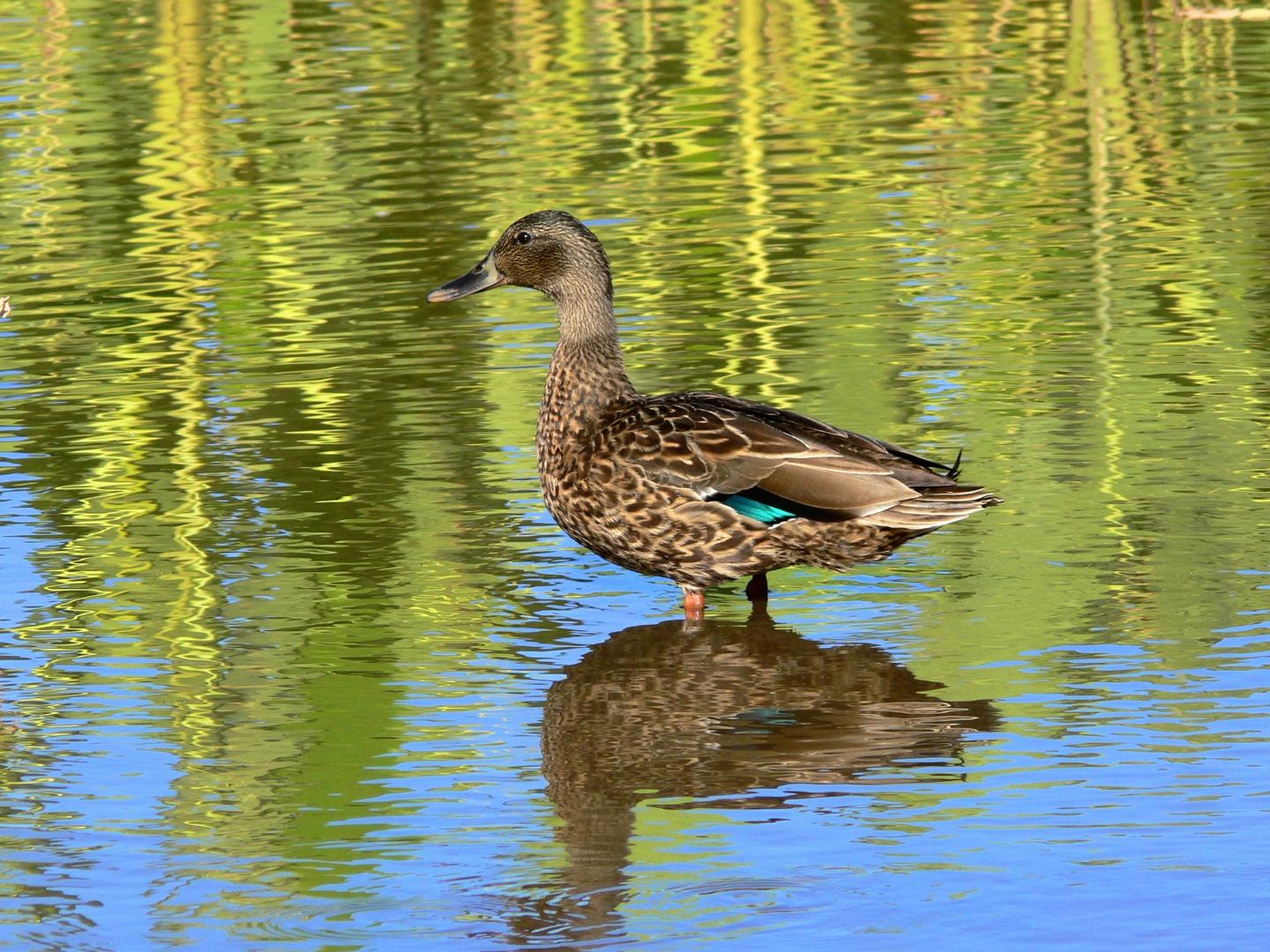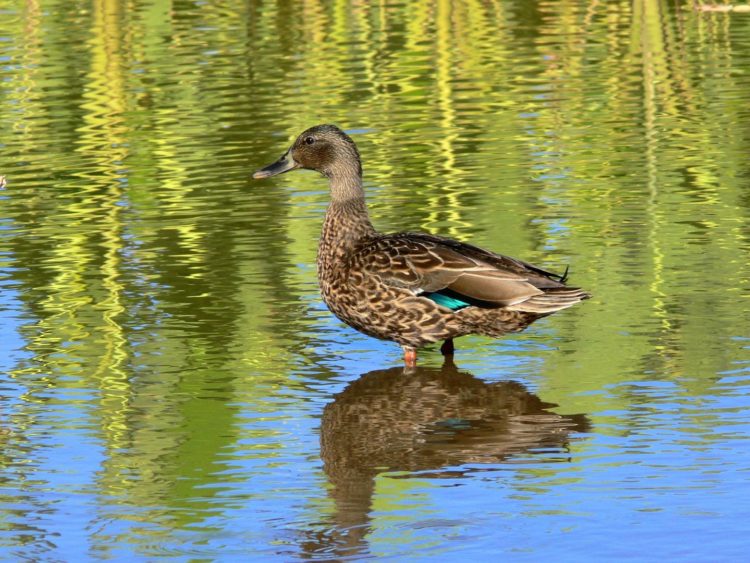
Credit: Christopher Malachowski, Oregon State University
The endangered Hawaiian duck, or koloa, the only endemic duck remaining on the main Hawaiian Islands, is threatened with genetic extinction due to interbreeding with feral mallards. This has led to the creation of hybrid forms of the koloa. But new research has found that the genetic diversity of the koloa is high, and conservation efforts on the island of Kauai have been successful.
Caitlin Wells, a research scientist at Colorado State University, conducted the research as a postdoctoral scholar at the University of California, Davis. This study is the culmination of two decades of research spearheaded by scientists from University of California, Davis; U.S. Fish and Wildlife Service; University of Texas, El Paso; Wright State University; Oregon State University; and the state of Hawaii’s Division of Forestry and Wildlife.
The results from the study offer hope for existing conservation efforts with the koloa and other endangered birds around the world.
“Persistence of an endangered native duck, feral mallards, and multiple hybrid swarms across the main Hawaiian Islands,” will be published Nov. 18 in Molecular Ecology, and Wells is the lead author.
A charismatic duck, located primarily on Kauai
Wells described the koloa as a “petite, buffy brown and charismatic duck,” similar to a female mallard.
“The fact that the koloa on Kauai are pure and have a lot of genetic variation are two really positive things that came out of this study,” said Wells.
Andy Engilis, study co-author and curator of the UC Davis Museum of Wildlife and Fish Biology, said this study is pivotal in the struggle to save koloa from extinction. He has been involved in conservation efforts and research of Hawaiian ducks since the late 1980s.
“This study lays the foundation for a new chapter in the recovery of the koloa, a new trajectory towards recovery and delisting as an endangered species,” he said.
Kimberly Uyehara, a Kauai National Wildlife Refuge Complex biologist and co-author of the study, said the findings are significant.
“They open new doors to the realm of possible recovery actions for koloa,” she explained.
The largest population of koloa is on Kauai, where the team found very few hybrid birds. On the other islands, however, all of the birds were hybrids or feral mallards.
Historically, koloa existed throughout the main Hawaiian islands, but they disappeared from all islands except Kauai and Niihau by the late 1960s due to habitat loss, introduced predators and unregulated hunting. Soon after, wildlife managers began captive breeding and release programs on Oahu, Hawaii and Maui to re-establish the koloa. Unfortunately, mallards were never removed on these islands, resulting in rapid hybridization.
This research study was conducted, in part, to determine the genetic makeup of koloa on Kauai. Previously, wildlife managers and conservationists raised concerns that even the refuges on Kauai contained hybrid ducks.
Research project involved an immense bird banding project
The research team studied 425 koloa, mallards and hybrids from populations across the Hawaiian Islands, gathering more than 3,300 genetic data points from the birds. The project involved a massive bird-banding project led by collaborators at Oregon State and the Hanalei National Wildlife Refuge. Members of the team collected blood samples from hundreds of the birds before releasing them back into the wild.
The researchers also gathered genetic data from the carcasses of koloa retrieved following botulism outbreaks, particularly in the Kauai population. All of the specimens and samples are archived at the UC Davis Museum of Wildlife and Fish Biology.
“We used a lot of tissue samples from salvaged birds that unfortunately died from those disease outbreaks,” said Wells.
Previously, wildlife managers had thought that if they left the koloa hybrids alone, the birds would eventually return to pure koloa on their own.
“That’s not what we found,” explained Wells. “If you don’t have pure koloa parents that outnumber the feral mallards, you’re not going to get any decreases in those hybrid proportions.”
Why preserve the koloa?
The recovery of the endangered koloa is important because the bird is endemic to the Hawaiian Islands.
“Its recovery could be viewed as a beacon of hope for the many dozens of critically endangered birds found in the islands,” said Engilis. Researchers also point out that its recovery is important because of its unique evolutionary history.
“Should the environment change, due to things like climate change, there’s a lot of potential for the koloa to evolve on its own, given the genetic diversity we’ve seen,” said Wells.
Hybridization of species is a tricky issue in conservation. Sometimes, it can threaten a unique gene pool of an animal that is well-adapted to its environment. In other cases, where a species is inbred, it might be the right move to add more genetic diversity to a population.
“But here’s a case where we have enough individuals with enough genetic variation in the koloa, and we’ve also genetically identified the hybridizing species,” she said. “It seems very clear that we can separate those going forward.”
What’s next for koloa conservation
Wells said the team’s research provides insight on successful conservation management and the ability to recover this species.
“These efforts might one day eventually lead to the koloa being taken off the endangered species list,” she said.
###
Additional co-authors on the study include Philip Lavretsky (University of Texas at El Paso), Jeffrey Peters (Wright State University), Jeffrey DaCosta (Boston College), Michael Sorenson (Boston University), Stephen Turnbull (State of Hawaii Department of Land and Natural Resources), Christopher Malachowski and Bruce Dugger (Oregon State University), and John Eadie (University of California, Davis).
Media Contact
Mary Guiden
[email protected]
970-491-6892





